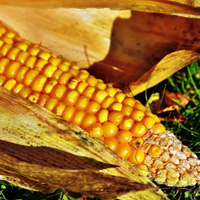Increased planting speed did not affect silage and grain yield of maize, while saving seed and energy

Accepted: 27 June 2020
HTML: 28
All claims expressed in this article are solely those of the authors and do not necessarily represent those of their affiliated organizations, or those of the publisher, the editors and the reviewers. Any product that may be evaluated in this article or claim that may be made by its manufacturer is not guaranteed or endorsed by the publisher.
Optimal planting speed of vacuum maize planters is usually suggested by planter’s manufacturers, while increased planting speed may influence plant spacing and finally yield. Our hypothesis was that by increasing planting speed over the suggested level plant spacing variability will also increase which will result in decrease of silage and grain yield and saving of seed and energy. The field trial consisted of three planting speeds of 7, 9 and 11 km/h in the form of random blocks. The following measurements were taken as follows: plant spacing, silage and grain yield, fuel and energy use at planting. Results in this study show that planting speed did not have significant influence on silage and grain yield of maize, while up to 10% less seed was needed per hectare and fuel and energy use was lower for 15%. By the increase of planting speed the distance between the plants in a row, and in most cases also the plant spacing variability increased. It was noticed that by increasing planting speed plant density decreased. This research established that at higher planting speeds significant increase of the silage yield per individual plant and of the grain yield per individual plant was achieved. The ear parameters also show that the kernel mass per individual ear, the ear mass, and the cob mass, as well as the individual kernel mass, are larger at the planting speed of 11 km/h than at the planting speed of 7 km/h. At the latter planting speed, significantly higher fuel consumption per hectare and higher energy use was achieved than at the other two planting speeds. Overall the main benefits of planting speed of 11 km/h is saving seed and energy at planting while maintaning the same level of silage and grain yield compared to lower planting speeds used in the trial.
Highlights
- Planting speed of vacuum planter did not influence the silage and grain yield of maize.
- At a higher planting speed up to 10% less seed was needed per hectare and fuel and energy use was reduced up to 15%.
- Silage and grain yield per individual plant increased by increasing planting speed.
- Increasing of planting speed plant density decreased.
- Plant spacing parameters were significantly affected by planting speed.
How to Cite
PAGEPress has chosen to apply the Creative Commons Attribution NonCommercial 4.0 International License (CC BY-NC 4.0) to all manuscripts to be published.

 https://doi.org/10.4081/ija.2020.1612
https://doi.org/10.4081/ija.2020.1612



